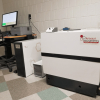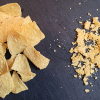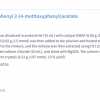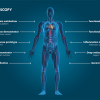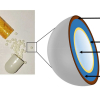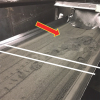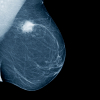Articles
Researchers from Technische Universität Dresden, reveal new insights into protonated mono and polyamines' behavior by determining pKa values using Fourier transform infrared titration, providing valuable data for chemical analysis.
Tony considers the “Life and death of a data set: a forensic investigation”. Over time, spectral data will become increasingly fragmented and lose important supporting information. Computer and software upgrades, and processing in chemometric programs can all cause this. Of course, the answer is to follow FAIR principles and ensure that they are implemented in the analytical laboratory.
Tony and Mohan Cashyap interview John Hollerton, who has just retired after a career of over 40 years at GSK (and its many previous names). John has been responsible for many aspects of analytical chemistry at GSK. As Tony says, he is “an innovative ideas man with some interesting stories”.
John Hammond finishes his magnum opus on “Four Generations of Quality” with a look at what is science fiction and what is science fact. He considers what may turn out to be “fact” in the future for each of the preceding eight articles in the series.
Tony Davies has started a timeline of significant spectroscopic system developments aligned with Queen Elizabeth’s reign as recently celebrated in her Platinum Jubilee. Jumping from Princess Anne the Princess Royal’s birth to Heinrich Kaiser certainly makes for a novel approach! Tony hopes that we can turn this into an online resource with your help.
This column has invited two world-renowned experts in near infrared (NIR) spectroscopy to let the world benefit from decades of leading-edge experience, especially regarding sampling for quantitative NIR analysis.
This article looks at three related spectroscopic techniques/tools in the toolbox, namely, Fluorescence, near infrared (NIR) and Raman; and discuss the “what”, “where” and “how” of these techniques are being used to improve the quality of the measurement processes associated with them.
This column starts to answer the question, “how does one actually find FAIR data?” with a detailed example from Imperial College London.
Despite a multitude of chemical and physical methods capable of detecting fingerprint residues, there are substantial challenges with fingerprint recovery. Spectroscopic methods have played a critical role in the analysis of fingerprints, used to identify the chemical constituents present, examine their degradation over time and compare the chemical variation between donors.
This article is about photoacoustic imaging and spectroscopy, and their use for looking inside us, where they have a number of benefits. Hilde Jans and Xavier Rottenberg explain the fundamentals and how new technology may be bringing a new photoacoustics age.
Once tablets and capsules have been removed from their original packing (which they often have to be), the possibility of certain identification is lost and mixups can happen. The authors have developed a database containing physical information about tablets/capsules and, crucially, ATR/FT-IR spectra. The spectra are usually able to narrow down the “prediction” to the correct medicine.
The SensorFINT COST Action is a European Network for assuring food integrity using non-destructive spectral sensors.
Following our articles on the FAIR initiative, we now look at some examples of the FAIRification of data handling, collection and archiving.
Cultural heritage is a growing application area for spectroscopy, and our second article describes how infrared and X-ray spectroscopy are being used to explore the coatings used by the old Cremonese makers that produced such outstanding sound.
The Tony Davies Column offers a challenge to us all with another contribution on FAIR data, which should be Findable, Available, Interoperable and Readable. It is clearly the way we should all be going, everybody from manufacturers and software developers, through researchers to publishers needs to work together.
The Sampling Column provides some easy-to-understand examples of what sampling errors are, what are the consequences of them and what can be done about them. Particular examples from pharma, PAT and NIR spectroscopy are provided.
How did a major trade show organiser cope with the disruption of COVID-19? Susanne Grödl, Exhibition Director of analytica for Messe München, gives her experience.
Following on from a recent column that reported on work which had shown that weight fractions were often incorrect concentration units to use in quantitative chemometric studies, Howard Mark goes into more detail.
Peter McIntyre and Tony Davies remember Bill George, a real Welsh character and educator whose style and charisma influenced many to go on and not only stay in science but to rise to leading positions either in industry or academia.
This article reports the use of near infrared (NIR) spectroscopy for the diagnosis of human breast cancer using tissue sections similar to those used by pathologists.



